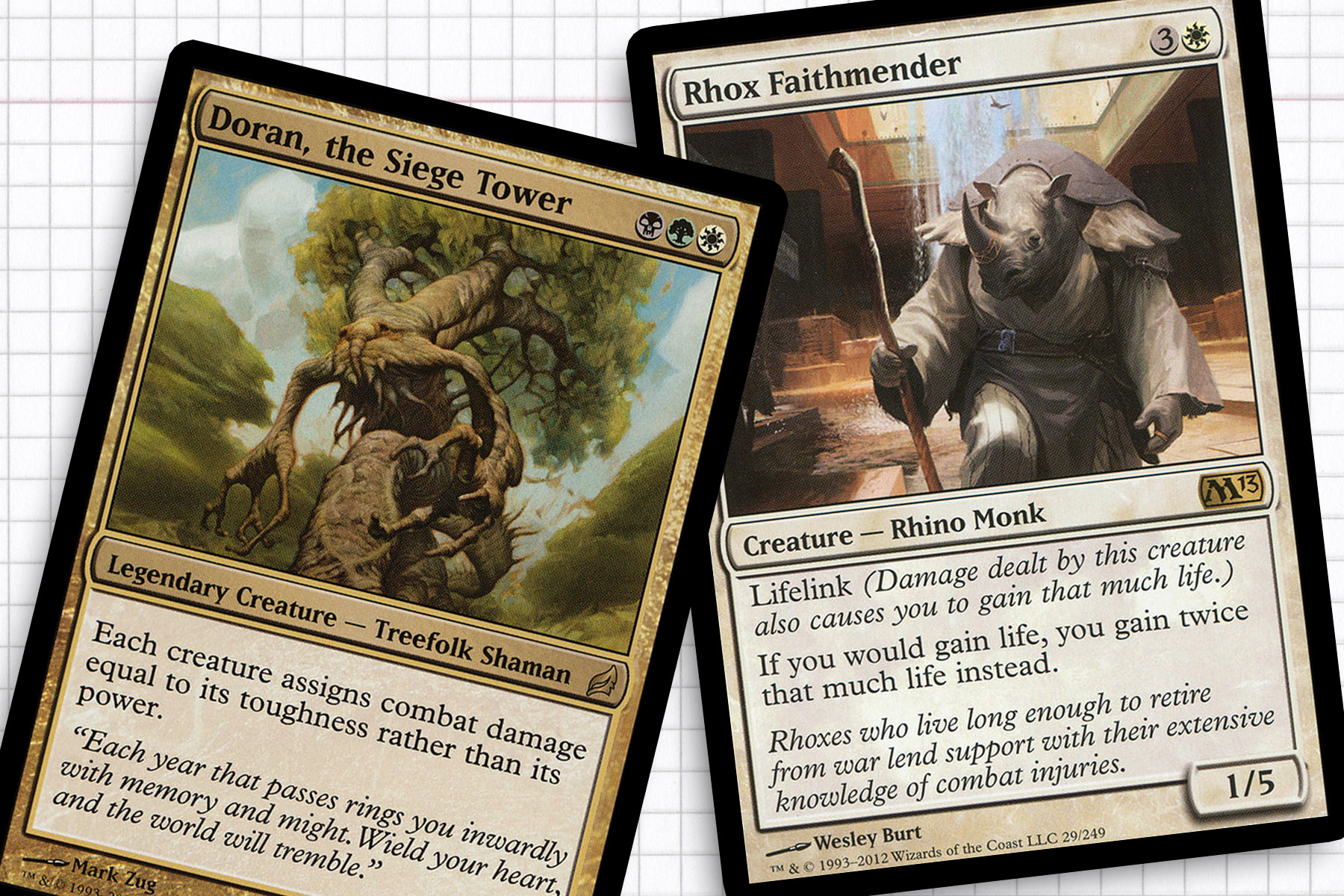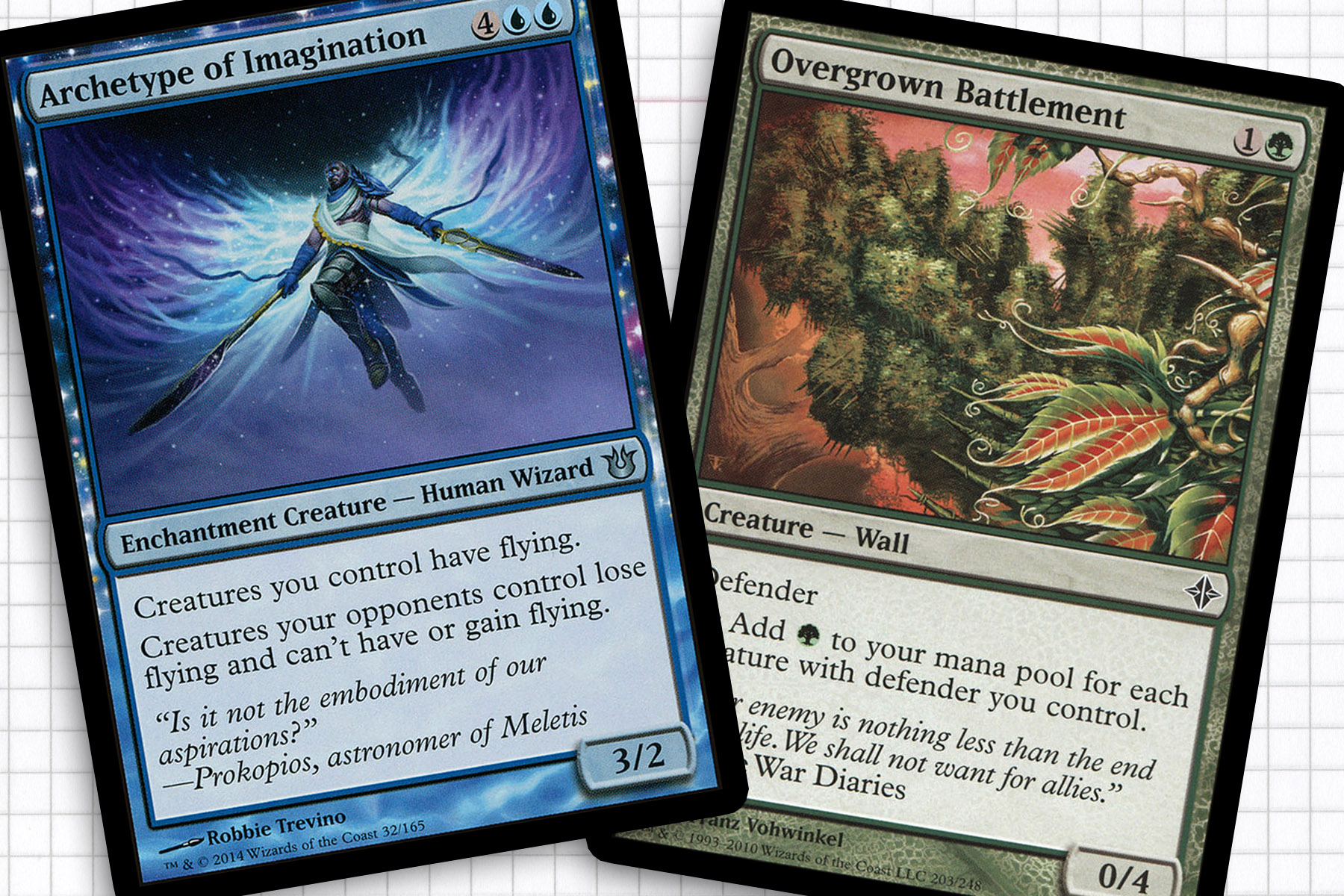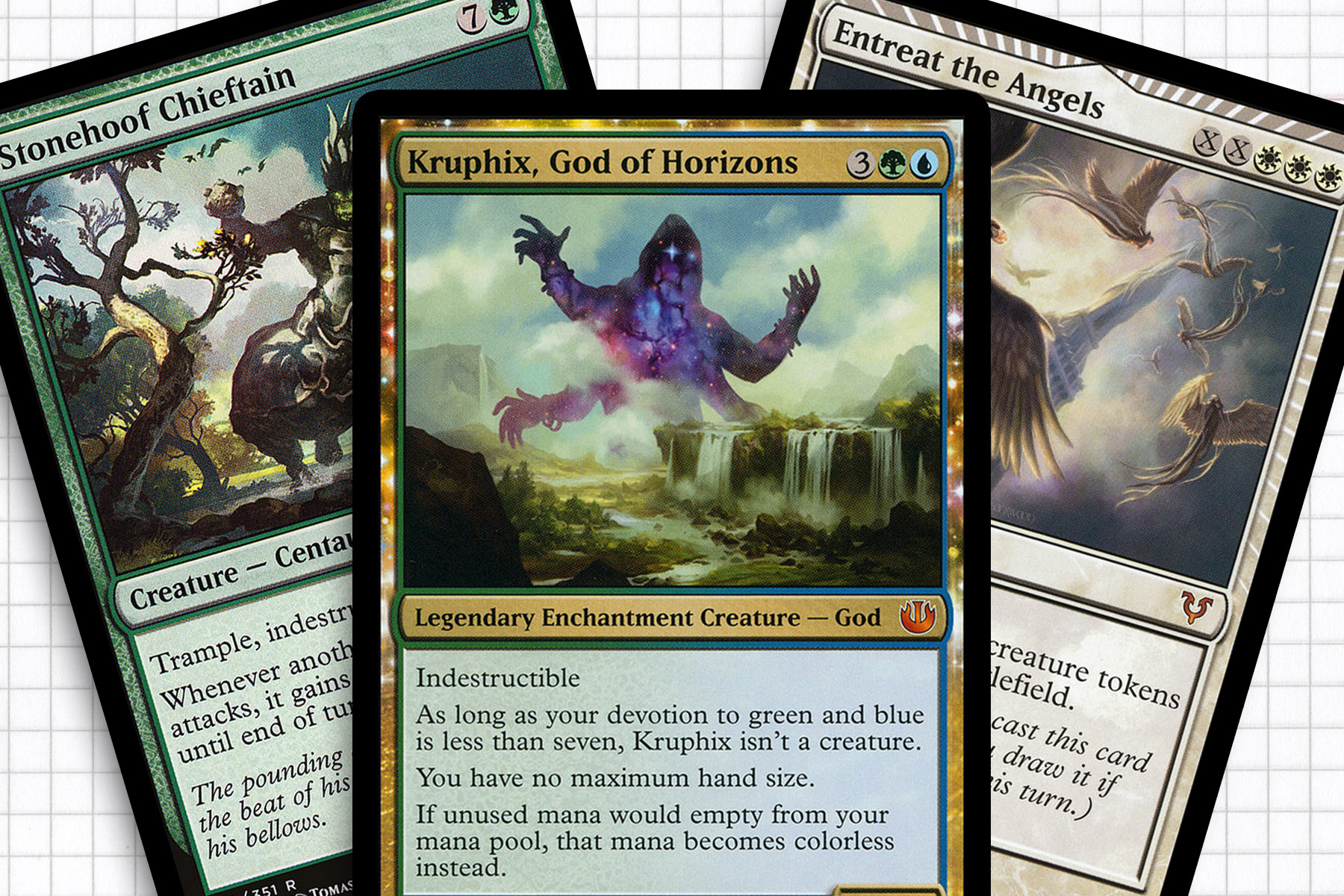As soon as Arcades, the Strategist was revealed for Core Set 2019, people were going wild for the open space this new “wall commander” offered to the format. In the month since its unveiling and release, I have played against three different builds, all of which play just about the same and sputter out to a Wrath of God or the loss of Arcades through a heavy commander tax or an on board lockdown spell like Lignify. One of those pilots was Alex Szeto, a deck builder who I trust, who later said that he had grown unimpressed with Arcades during the games he played at GP Minneapolis. I took notice.
My perspective from across the table was in line with how he felt from the driver’s seat. Arcades, at its most simple build, is really a one trick pony. The problem as I see it is that to gain the most value, the deck is casting 0/7 defenders for zero to two mana and trying to draw to the next defender, which sounds great on paper; but falls apart when you move to the attack step and another player casts Into the Roil, possibly even kicked. This leads me to believe that the deck has a good foundation, it just needs twist or gimmick to push it to the next level.
Today, I would like to apply my own crazy logic and see if I can’t uncover something truly special that can be done with this Elder Dragon. I want to still cast a fair amount of creature with defender, draw a few extra cards, and win through combat, I just don’t want to have my entire game plan crumble without my general.

Not the New Doran
I think the first realization that needs to be put forward is the Arcades, the Strategist and Doran, the Siege Tower are not as similar as they might seem. As a Doran player of almost five years, I bought into the hype a little too, though I never considered shifting my deck, even when a few friends posed the question of if I might. Doran works differently: he can blank a lot voltron strategies and messes up combat every turn. He makes defenders more appealing, sure, but he makes all creatures with higher toughness than power more appealing across the board. But I think the more imperative thing is, he’s more open ended; this might be because he is an eleven year old card, so we’ve had the time to play with him. But in the big picture, Doran doesn’t require you to play creatures that do little without him in play.
Looking through my deck, Wakestone Gargoyle is not a card I use in Doran. Assault Formation is only used as a redundant card slot for my general, and I include cards like Rhox Faithmender because it can gain advantage being in play with Doran. For all these reasons and more, I just don’t think these two generals are trying to be variants of the same archetype. This isn’t just characteristic of having blue over black, one is built towards a controlling strategy using an unconventional marker for “tribe” and the other behaves more aggressively while being a foil to certain strategies. In fact, due to the enter the battlefield triggers, I believe that Arcades has more connections with a deck like General Tazri than most other options I have seen explored.

Redefining Defender
Looking at Arcades, I think the promise of attacking with defenders is a trap—or at least thinking that the game plan should revolve around winning with combat damage from defenders is. In the few games I have played against Arcades, the controller is always attacking with Arcades along with their other creatures. This leads me down the path that a better strategy might be taking a page out of the Rise of the Eldrazi Limited playbook and use the “defender tribal” to stall long enough to cast bigger game winning spells. The twist here is that the Overgrown Battlement isn’t just going to generate stacks of green mana, but will also be threatening to attack.
The great thing about Arcades in this case is that unlike Doran, we will not be affecting non-defenders; as such, creatures with odd power/toughness ratios like Fangren Firstborn, Shambleshark, or Battering Krasis can thrive in this deck without losing their edge. The next step I would take is finding enchantments that grant our entire team keywords like flying and first strike through methods like Archetype of Imagination, Levitation, Archetype of Courage, and Knighthood. This change not only upgrades our 0/X creatures for attacking and blocking, but adds interactions I simply didn’t see in the half-dozen games I’ve played against the deck. This strategy should be feeding into our grand plan to cast over-the-top spells in the mid to late game.
Regardless of how far we want to drift away from playing exclusively defenders, I do recognize that that is the big draw of Arcades. But the tactical change I think would could be benefit the deck is employing Eerie Interlude and Ghostway to blink our defenders in order to emulate Mind Spring at an advantageous point in the game and refill our hand. For smaller versions of this we can slot Cloudshift, Displace, and Ghostly Flicker in to reset blockers and draw extra cards.

Going Over the Top
Since we’ve opted into modifying our game plan to ramping into bigger and better spells, I’d like to outline a few I think would be advantageous to keep in mind. The key card for ramping really is going to be Overgrown Battlement in terms of deck theme style points; but with green in our deck we can sneak Explosive Vegetation, Skyshroud Claim, and Nature’s Lore in between some of our early creature spells and set up for Arcades, Aluren, and then our bomb spells. To overcome our handicap to wrath effects, I propose that we concentrate our bigger creatures on the ability to be indestructible, my favorites being Konda, Lord of Eiganjo, Colossus of Akros, Stonehoof Chieftain, and Zetalpa, Primal Dawn.
The deck is already going wide, as such it seems practical to believe that we should be able to maintain pretty high devotion to the Theros gods Karametra, God of Harvests, Ephara, God of the Polis, and Kruphix, God of Horizons. As indestructible creatures with static abilities, they will be able to improve our creatures either through land tutoring or additional card draw and banking extra mana we might produce and turning it into large spells like Genesis Wave or Entreat the Angels.
The changes I would make to this deck might only be a ten to twelve card package, meaning that the deck can still capture the feeling that many people are looking for and were excited by when Arcades, the Strategist was previewed. What I’m proposing is really a refinement of the established game plan. At its simplest, find the 40 defenders you like the most, swap out the rubbish cards for something that will make impacts on the game in different ways, and bring some versatility to your deck.
The takeaways from this week should not be that current Arcades builds are fundamentally wrong or that Arcades cannot be a fun deck to being in the driver’s seat with, but I do question if our first reactions as a community might have been flawed. Playing across the table from a deck a few times and then stripping its core down to propose an upending of the direction of the deck is a tall order. It’s even possible that a better answer exists or that Arcades players are fine with just how the linear build works.
We have a Bant commander that operates in a different way than other generals in the color identity, and I wonder if that means that something new is waiting to be found. I like Wall Tribal. For years I was trying to build a sixty-card deck around the concept, having seen Rolling Stones in a pack of Seventh Edition. But to thrive, a twist needs to be asserted onto this deck to make it something that can actually compete, because right now I don’t know if it had the chops to survive in the typical metagame and stay impactful. What are your thoughts on Arcades? Track me down, let’s chat.

